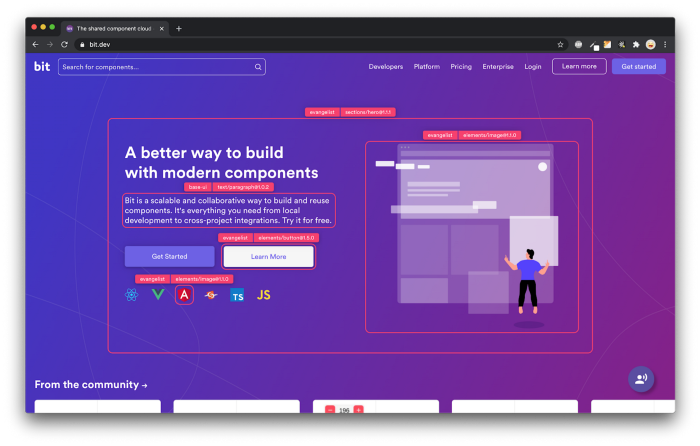This content originally appeared on Bits and Pieces - Medium and was authored by Advait Ranade

Introduction
The software development industry is constantly evolving and new trends and technologies are emerging every day. One of the most significant trends in recent years is the move towards microservices architecture, which is becoming increasingly popular among organizations. Microservices offer several benefits such as increased scalability, faster deployment and easier maintenance, making it a more attractive option for modern software development.
However, this increased complexity also introduces new security challenges, making it essential to consider security at each stage of the development process. This is where DevSecOps comes in, providing a comprehensive approach to securing microservices applications. In this article, we will explore the importance of DevSecOps for microservices and why organizations need to adopt this approach.
Why are microservices vulnerable to security threats?
Microservices architecture[1] introduces several new security challenges, mainly due to the increased complexity of the system. With multiple services, there are more potential attack surfaces, and it becomes more difficult to maintain a consistent security posture. In addition, microservices may run on different platforms, which can also lead to security vulnerabilities.
Moreover, microservices are often deployed in containers, making it easier for attackers to move laterally within the system and gain access to sensitive data. The use of containers also requires new security measures to be put in place, such as securing the host operating system, controlling network access, and securing container images.
Why do microservices need a security guard?
“what security guard is to a building DevSecOps is to microservice architecture”
![Reference[3]](https://cdn-images-1.medium.com/max/550/1*QEmAttS5qqq9Tcsylzx5Jg.png)
DevSecOps[2][3] is the integration of security practices into the software development lifecycle, ensuring that security is considered and implemented at each stage of the process. DevSecOps helps to identify and mitigate security risks, maintain compliance with security standards, and improve overall security posture.
DevSecOps provides a continuous integration and continuous delivery (CI/CD) pipeline for microservices, making it easier to implement security measures such as automated security testing and continuous security monitoring. Organizations can quickly detect and fix security problems, decreasing the chance of security issues, by using this method.
In addition, DevSecOps enables organizations to automate security testing and reduce the time required to deploy new features, making it easier to bring new products and services to market faster. This is crucial, especially in the rapidly evolving microservices environment where speed is key.
Best practices for implementing DevSecOps[4]:
- Automate security testing: Automated security testing is a critical component of DevSecOps. Security testing should be integrated into the CI/CD pipeline and run automatically during the build and deployment phases. This helps identify and fix security issues early in the SDLC, before they can become more difficult and expensive to remediate.
- Implement role-based access control (RBAC): RBAC is a security system that assigns access rights and duties to individuals based on their job function within a company. In a microservices environment, RBAC can be used to limit access to sensitive data and systems, reducing the risk of security breaches.
- Foster a culture of security: DevSecOps is not just a set of processes and tools, it’s a culture that values security and incorporates it into every aspect of the software development life cycle. Organizations should promote this culture by regularly educating their employees on the importance of security and encouraging them to think about security at every stage of the SDLC.
Conclusion
Microservices architecture provides numerous advantages to organizations, however, it also presents new security difficulties. DevSecOps provides a comprehensive approach to securing microservices applications, helping organizations to identify and mitigate security risks, maintain compliance with security standards, and improve overall security posture.
This will help organizations to reduce the risk of a security breach, bring new products and services to market faster, and maintain a consistent security posture in a complex and rapidly changing environment.
References:
- https://microservices.io/
- https://www.redhat.com/en/topics/devops/what-is-devsecops
- https://www.databytescloud.com/mssp/devsecops-as-a-service/
- https://www.kiuwan.com/blog/overcoming-microservices-architecture-risks/?
From monolithic to composable software with Bit

Bit’s open-source tool help 250,000+ devs to build apps with components.
Turn any UI, feature, or page into a reusable component — and share it across your applications. It’s easier to collaborate and build faster.
Split apps into components to make app development easier, and enjoy the best experience for the workflows you want:
→ Micro-Frontends
→ Design System
→ Code-Sharing and reuse
→ Monorepo
Learn more
- How We Build Micro Frontends
- How we Build a Component Design System
- How to reuse React components across your projects
- 5 Ways to Build a React Monorepo
- How to Create a Composable React App with Bit
DevSecOps: The Security Guard of Microservice Architecture was originally published in Bits and Pieces on Medium, where people are continuing the conversation by highlighting and responding to this story.
This content originally appeared on Bits and Pieces - Medium and was authored by Advait Ranade
Advait Ranade | Sciencx (2023-02-16T12:32:03+00:00) DevSecOps: The Security Guard of Microservice Architecture. Retrieved from https://www.scien.cx/2023/02/16/devsecops-the-security-guard-of-microservice-architecture/
Please log in to upload a file.
There are no updates yet.
Click the Upload button above to add an update.
